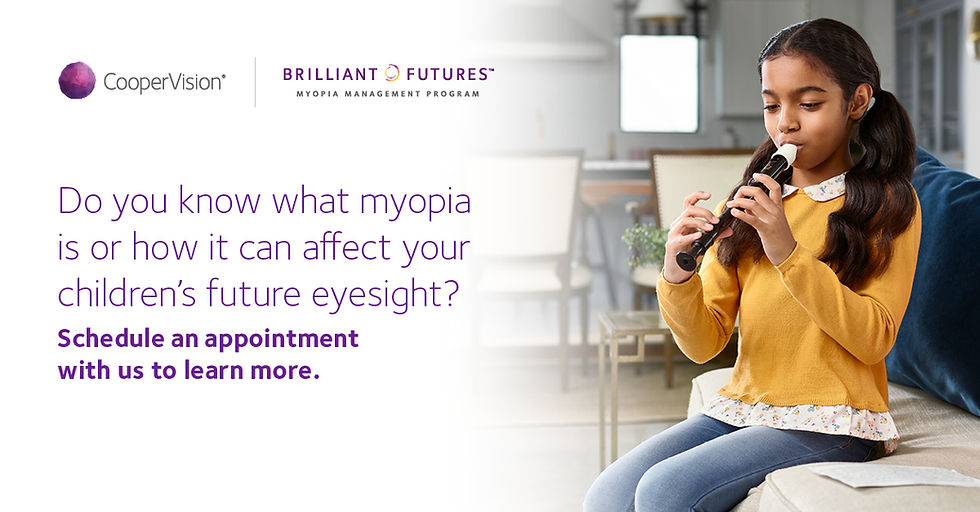Their Myopia Shouldn't
When I was a kid and went for my annual eye exam it seemed normal that my prescription increased every year. My vision would get blurry, and I would need a stronger prescription. As my prescription increased so did my dependence on glasses (or contacts). At that time, everyone from my eye doctor to my parents accepted this to be the normal childhood progression of myopia. But we have great news for parents today! Now your eye doctor has treatments available to slow the progression of myopia.

What is myopia?
Myopia is more commonly referred to as nearsightedness, or the inability to see objects clearly at a distance. The reason objects are blurry in the distance with nearsightedness is because the eye becomes longer as the child grows.
In the early 1970s, only 25% of Americans were nearsighted. Today, more than 40% of Americans are nearsighted, and that number is increasing at an alarming rate, especially among school-age children.
What is myopia management?
Myopia management is a treatment program prescribed by your eye doctor, to stop or slow myopia progression. Some treatment options include multifocal glasses, eyedrops, orthokeratology and dual focus contacts. The first FDA approved treatment for myopia was the MiSight contact lens. MiSight soft contact lenses fit and feel like regular contact lenses. They not only correct distance vision but have the added benefit of being clinically proven to slow the progression of myopia by an average of 59%.
Why is myopia management important?
Leaving myopia unmanaged may contribute to more severe eye health complications and sight-threatening conditions later in life, including vision loss from glaucoma, cataracts, retinal detachment and myopic maculopathy.
When should my child start myopia management?
As soon as possible! The research shows that the earlier a child becomes myopic, the faster their prescription will continue to worsen. If you want to have the biggest impact on slowing myopia progression and reducing the final amount of myopia for your child, start as soon as the risk is identified.
Some parents can be cautious to start a myopia management treatment because they feel their child is too young. The MiSight contact lens was studied in children between the ages of 8-12 years old. Children reported excellent vision performance with MiSight 1 day lenses while playing outside, watching TV, doing schoolwork, reading, and looking at the computer. Furthermore, studies have shown that children experience fewer adverse events that disrupt contact lens wear than college-age contact lens wearers.
If you'd like more information about myopia management and to find out if your child is a good candidate, call us today for a consultation!

Comments